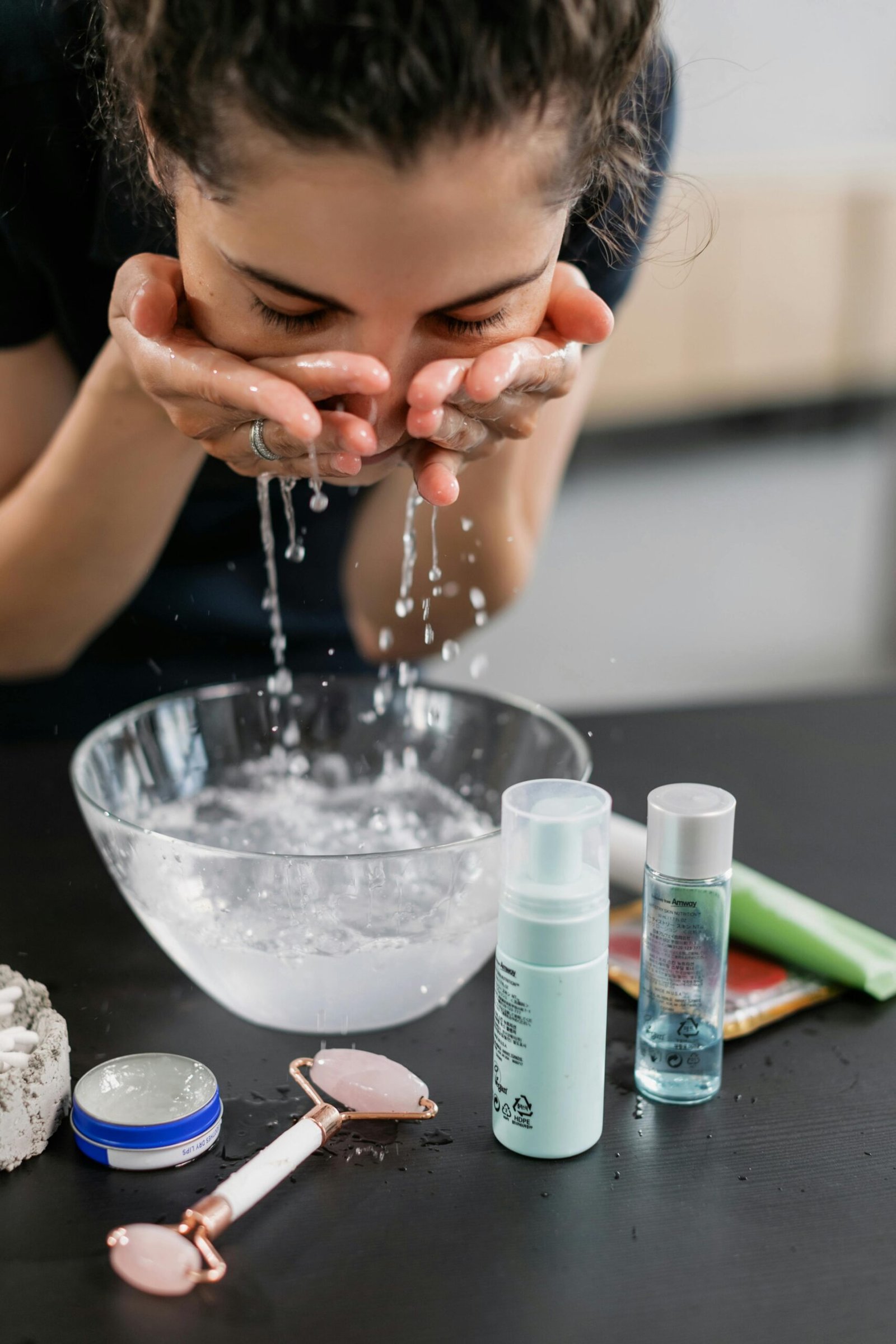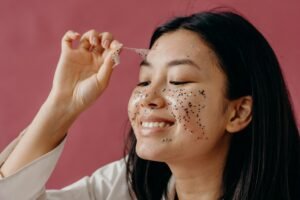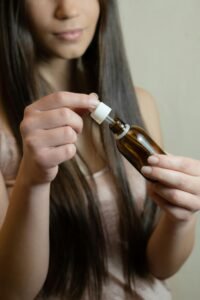The Ultimate Nighttime Routine for Clearer, Brighter Skin
A night skincare routine is more than just removing your makeup and calling it a day. While you sleep, your skin is hard at work repairing and renewing itself. A proper night skincare routine harnesses this natural regeneration process to deliver real, visible results—clearer skin, even tone, fewer breakouts, and a lasting glow.
In this detailed guide, we’ll break down the best night skincare routine of 2025, complete with step-by-step instructions, ingredient recommendations, product suggestions, and image/infographic placement to help make your nighttime ritual both effective and relaxing.
Why Night Skincare Routine Matters More Than You Think
During the night, your body switches to “repair mode.” That includes your skin. Without exposure to sun, pollution, or makeup, your skin can absorb products more deeply and begin to heal.
Benefits of a Consistent Night Skincare Routine:
- Promotes collagen production
- Fades dark spots and acne scars
- Strengthens the skin barrier
- Reduces inflammation and redness
- Prevents premature aging
- Improves hydration levels
Focus Keyword Used: night skincare routine
Step 1: Double Cleanse to Remove Every Trace of Dirt
Why it matters: Cleansing is the most important step in your night skincare routine because it preps your skin for every product that follows.
First Cleanse (Oil-based):
Removes makeup, sunscreen, and excess oil.
Top Picks:
- Banila Co Clean It Zero Cleansing Balm
- Farmacy Green Clean Makeup Removing Balm
Second Cleanse (Water-based):
Cleans your pores and removes sweat or grime.
Top Picks:
- CeraVe Hydrating Cleanser
- La Roche-Posay Toleriane Purifying Foaming Cleanser
Infographic Cue: Double Cleansing Flowchart (Step 1 → Step 2)
Keyword Usage: night skincare routine, double cleanse for night, best night face wash
Step 2: Apply a Balancing Toner
A toner restores the skin’s pH level and enhances absorption of future products in your night skincare routine.
Recommended Ingredients:
- Witch hazel (for oily skin)
- Hyaluronic acid (for dry skin)
- Rose water (for sensitive skin)
Product Examples:
- The Ordinary Glycolic Acid 7% Toning Solution
- Thayers Alcohol-Free Rose Petal Toner
Keyword Usage: toner for night skincare routine, balancing toner, best toner at night
Step 3: Exfoliate 2–3 Times a Week
Exfoliating is not a daily step but should be part of your night skincare routine two to three times a week to remove dead skin cells and clear clogged pores.
Exfoliation Types:
- Physical exfoliants: Sugar scrubs, rice powder
- Chemical exfoliants: AHAs (glycolic acid), BHAs (salicylic acid)
Top Products:
- Paula’s Choice Skin Perfecting 2% BHA Liquid
- The Inkey List Lactic Acid
Note: Always follow with moisturizer and never mix exfoliants with retinol.
Keyword Usage: exfoliate at night, chemical exfoliation night skincare routine
Step 4: Targeted Serums for Skin Concerns
Serums contain high concentrations of active ingredients that treat specific skin issues during your night skincare routine.
Choose Your Serum Based on Skin Type:
- Acne-prone skin: Niacinamide, salicylic acid
- Aging skin: Retinol, peptides
- Dry skin: Hyaluronic acid, ceramides
Top Picks:
- The Ordinary Retinol 0.5% in Squalane
- COSRX Advanced Snail 96 Mucin Power Essence
- La Roche-Posay Hyalu B5 Serum
Image Cue: Close-up of 3 night serums labeled by purpose
Keyword Usage: nighttime serum, best night serum 2025, active serums for night skincare routine
Step 5: Rich Moisturizer or Night Cream
Nighttime is the best opportunity to deeply hydrate and restore your skin barrier. A rich moisturizer is key in any night skincare routine.
Ideal Ingredients:
- Ceramides
- Peptides
- Squalane
- Panthenol
Recommended Products:
- CeraVe PM Facial Moisturizing Lotion
- Laneige Water Sleeping Mask
- First Aid Beauty Ultra Repair Cream
Keyword Usage: night cream, night moisturizer for glowing skin, best nighttime hydration
Step 6: Spot Treatments (If Needed)
Spot treatments target breakouts, dark spots, or rough patches during your night skincare routine.
Options:
- For acne: Benzoyl peroxide, salicylic acid, sulfur
- For hyperpigmentation: Alpha arbutin, licorice extract
Examples:
- Mario Badescu Drying Lotion
- The Ordinary Alpha Arbutin 2% + HA
Keyword Usage: spot treatment for night, acne solution at night
Step 7: Night Eye Cream
The skin around the eyes is delicate and often the first to show signs of aging. Add a nourishing eye cream to your night skincare routine.
Best Ingredients:
- Retinol (low strength)
- Caffeine
- Peptides
Top Picks:
- Olay Eyes Retinol24 Night Eye Cream
- The INKEY List Caffeine Eye Cream
Keyword Usage: night eye cream, eye skincare at night
Optional Add-ons: Face Oil, Sleeping Mask, or Overnight Treatment
If your skin is especially dry or mature, you can finish your night skincare routine with an oil or a sleeping mask to lock everything in.
Top Add-ons:
- The Ordinary 100% Organic Rosehip Oil
- Innisfree Green Tea Sleeping Mask
- Glow Recipe Avocado Melt Retinol Sleeping Mask
Keyword Usage: overnight skincare, sleeping mask, nighttime face oil
The Science: Why Nighttime Is Best for Skin Repair
Dermatologists agree that nighttime is when your skin regenerates most actively.
What Happens While You Sleep:
- Increased cell turnover
- Enhanced blood flow to the skin
- Collagen production peaks
- Cortisol drops → reduced inflammation
Infographic Cue: “What Your Skin Does While You Sleep” chart
Keyword Usage: night skincare science, skin repair at night
Suggested Night Skincare Routine Timeline
| Time | Step | Duration |
|---|---|---|
| 9:00 PM | Double Cleanse | 5 mins |
| 9:05 PM | Toner | 1 min |
| 9:06 PM | Exfoliate (2x/week) | 5 mins |
| 9:11 PM | Serum | 2 mins |
| 9:13 PM | Moisturizer | 2 mins |
| 9:15 PM | Spot Treatment (if needed) | 1 min |
| 9:16 PM | Eye Cream | 1 min |
| 9:17 PM | Sleeping Mask (optional) | 1 min |
Total Time: ~15–20 minutes
Expert Tips from Dermatologists
- Tip 1: Always patch-test new ingredients at night.
- Tip 2: Stick to 1–2 actives in a single routine to avoid irritation.
- Tip 3: Avoid harsh exfoliants or retinol when sunburned.
- Tip 4: Be consistent—results come from regular application.
Night Skincare Routine FAQs
Q: Can I skip my night skincare routine?
A: Skipping once in a while won’t hurt, but consistent care ensures long-term results.
Q: Should I wash my face again in the morning after a full night routine?
A: Yes, use a gentle cleanser in the morning to refresh your skin.
Q: Can I use retinol every night?
A: Beginners should start 2–3x per week, then build up. Always follow with a moisturizer.
Final Thoughts
A thoughtful, targeted night skincare routine can completely transform your skin. It’s your best chance to treat acne, fade scars, hydrate deeply, and improve skin tone while your body naturally repairs itself. Whether you’re using retinol, nourishing oils, or sleeping masks, consistency and product layering are key.
Sleep well. Wake up glowing.
Make your night skincare routine a ritual of self-care and transformation.
Skincare for 30s: What to Start Using Now for Youthful, Healthy Skin
Your 30s are a pivotal decade for your skin. It’s when collagen production slows, cell turnover decreases, and early signs of aging begin to appear. But don’t worry — this is also the perfect time to revamp your skincare for 30s and prevent fine lines, dullness, and dehydration before they become deeper concerns.
At Nimconadar.com, we believe that the right skincare for 30s can help you glow gracefully through every stage of life. This comprehensive 3000-word guide covers everything from ingredients, product suggestions, routines, and dermatologist-backed advice designed for glowing, healthy skin in your 30s.
Let’s build your new skincare foundation — starting now.
Why Skincare Changes in Your 30s
Your skin in your 30s is biologically different than it was in your 20s. Here’s what begins to change:
- Collagen declines by ~1% per year
- Cell turnover slows, causing dullness
- Fine lines and expression wrinkles appear
- Hormonal changes affect oil production
- Dark spots and pigmentation start to show
- Skin barrier weakens, leading to dryness
That’s why targeted skincare for 30s becomes essential — it’s about both correction and prevention.
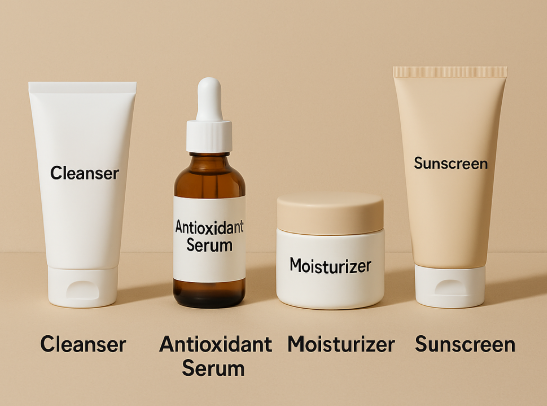
Morning Skincare Routine for 30s
Your morning skincare routine should focus on protection and hydration. Think antioxidants, lightweight moisture, and sunscreen.
Step 1: Gentle Cleanser
Cleanses away oil and refreshes the skin without stripping moisture.
Top picks:
- CeraVe Hydrating Facial Cleanser
- La Roche-Posay Toleriane Hydrating Gentle Cleanser
Step 2: Antioxidant Serum (Vitamin C)
Vitamin C is crucial in skincare for 30s to prevent environmental damage and brighten dull skin.
Best vitamin C serums:
- SkinCeuticals C E Ferulic
- The Ordinary Ascorbic Acid 8% + Alpha Arbutin 2%
Step 3: Lightweight Moisturizer
Hydration protects the skin barrier and plumps fine lines.
Best options:
- Neutrogena Hydro Boost Water Gel
- Clinique Moisture Surge 100H
Step 4: Sunscreen (SPF 30+)
UV protection is non-negotiable in skincare for 30s. Prevents aging and pigmentation.
Derm-approved picks:
- EltaMD UV Clear SPF 46
- Supergoop! Unseen Sunscreen
Infographic cue: “AM Skincare for 30s – 4 Steps to Radiance”
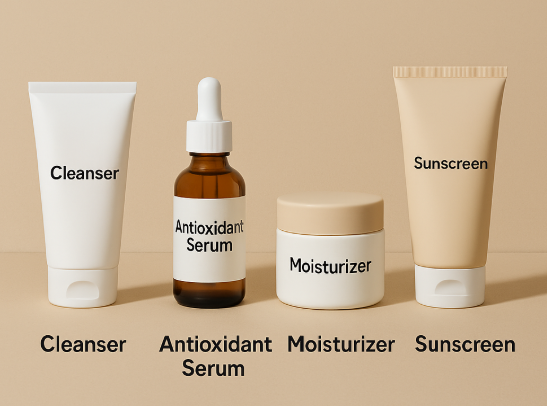
Night Skincare Routine for 30s
Your night routine should focus on repair and renewal. Add exfoliants, retinoids, and deep hydration.
Step 1: Double Cleanse
Especially if you wear makeup or SPF.
Best products:
- Banila Co Clean It Zero
- The INKEY List Oat Cleansing Balm
Step 2: Exfoliating Toner (2–3x per week)
Promotes cell turnover and boosts glow.
Recommended exfoliants:
- Glycolic Acid (The Ordinary)
- Lactic Acid (The INKEY List)
Step 3: Retinol or Retinoid
The holy grail for anti-aging skincare for 30s. It smooths fine lines, firms skin, and evens tone.
Starter retinols:
- CeraVe Resurfacing Retinol Serum
- The Ordinary Retinol 0.2% in Squalane
Step 4: Barrier Repair Moisturizer
Locks in moisture and repairs the skin while you sleep.
Top picks:
- First Aid Beauty Ultra Repair Cream
- CeraVe PM Moisturizing Lotion
Optional: Eye Cream
Start using an eye cream with peptides or low-strength retinol.
Favorites:
- Olay Eyes Retinol24
- RoC Retinol Correxion Eye Cream
Key Ingredients to Start Using in Your 30s
When building your skincare for 30s, look for these high-impact ingredients:
| Ingredient | Purpose |
|---|---|
| Retinol | Speeds cell turnover, smooths fine lines |
| Vitamin C | Brightens skin, boosts collagen |
| Hyaluronic Acid | Hydrates and plumps skin |
| Niacinamide | Fades pigmentation, strengthens barrier |
| Peptides | Support collagen production |
| Ceramides | Repair and protect the skin barrier |
Product Routine Examples: Dry, Oily & Combination Skin
For Dry Skin:
- Gentle cream cleanser
- Vitamin C serum
- Rich moisturizer with ceramides
- Night retinol + sleeping mask
For Oily Skin:
- Foaming cleanser
- Niacinamide serum
- Gel-based moisturizer
- Lightweight retinol 2–3x/week
For Combination Skin:
- Balancing cleanser
- Vitamin C in AM, retinol in PM
- Light moisturizer in AM, rich in PM
- Exfoliating toner 2x/week
Infographic cue: “Skincare for 30s by Skin Type”
What Dermatologists Recommend in Your 30s
- Start retinoids ASAP. They’re the gold standard for aging prevention.
- SPF is your forever friend. It prevents up to 90% of visible aging.
- Don’t over-exfoliate. Stick to 2–3x/week for chemical exfoliants.
- Hydration is essential. Even oily skin needs hydration.
- Protect your neck & hands. Extend skincare beyond your face.
Frequently Asked Questions (FAQs)
Q: Should I start using retinol in my 30s?
A: Yes! Retinol is one of the best preventative anti-aging ingredients and safe to begin in your early 30s.
Q: Is sunscreen still necessary if I work indoors?
A: Yes, UVA rays penetrate windows and can still damage your skin.
Q: Can I use vitamin C and retinol together?
A: Use Vitamin C in the morning and retinol at night to avoid irritation and maximize results.
Lifestyle Habits to Support Skincare in Your 30s
- Get 7–9 hours of sleep
- Eat antioxidant-rich foods
- Drink plenty of water
- Manage stress with mindfulness
- Avoid smoking and excessive alcohol
Skincare is just one part of skin health. Your lifestyle plays a huge role in the long-term results.
Final Thoughts: Own Your Glow in Your 30s
Your 30s are the time to shift from simple skincare to smart skincare. With consistent routines, potent ingredients, and the right lifestyle, your skin can stay radiant, clear, and youthful for decades to come.
At Nimconadar.com, we believe in empowering you to make informed skincare choices. Keep checking back for more guides, routines, and product roundups tailored for your age and skin type.
Retinol for Beginners: When, How & Why to Start Using It in 2025
If you’re just starting to explore skincare, the word “retinol” can feel intimidating. Known as the gold-standard anti-aging ingredient, retinol promises smoother, brighter, and clearer skin. But how do you use retinol for beginners without causing irritation, redness, or peeling?
At Nimconadar.com, we’re breaking down retinol for beginners step by step — no confusion, no complications. Whether you’re in your 20s, 30s, or beyond, this guide will teach you how to introduce retinol into your skincare routine safely and effectively.
Let’s start your retinol journey the right way!
What Is Retinol and How Does It Work?
Retinol is a form of vitamin A, a powerhouse ingredient that helps to:
- Speed up cell turnover
- Stimulate collagen production
- Reduce fine lines and wrinkles
- Clear up acne
- Brighten skin tone
- Fade dark spots and hyperpigmentation
Retinol vs. Retinoids
Retinol is available over-the-counter (OTC), while retinoids (like tretinoin) are stronger and often require a prescription. If you’re a beginner, retinol is the best place to start.
Benefits of Retinol for Beginners
Adding retinol to your skincare routine has massive benefits, even in small concentrations:
| Benefit | Why It Matters |
|---|---|
| Boosts collagen | Firms skin and reduces sagging |
| Fades acne scars and dark spots | Evens out skin tone |
| Reduces fine lines | Slows down visible aging |
| Unclogs pores | Minimizes breakouts and acne |
| Smooths texture | Gives skin a soft, radiant glow |
Infographic Cue: “Top 5 Benefits of Retinol for Beginners”
Best Retinol Products for Beginners (2025)
Here are dermatologist-approved retinol products that are gentle and effective for first-time users:
1. The Ordinary Retinol 0.2% in Squalane
Affordable, minimal, and great for sensitive skin.
2. CeraVe Resurfacing Retinol Serum
With niacinamide and ceramides to soothe and protect your skin barrier.
3. Paula’s Choice 0.3% Retinol + Peptides
Great for aging concerns and sensitive skin types.
4. La Roche-Posay Retinol B3 Serum
Combines retinol with hyaluronic acid and vitamin B3 for hydration and anti-redness support.
🛍️ Product Image Suggestion: Flat lay of beginner-friendly retinol bottles.
Step-by-Step Guide to Using Retinol for Beginners
Here’s how to introduce retinol for beginners into your skincare routine safely:
Step 1: Cleanse
Use a gentle, non-stripping cleanser. Avoid actives like glycolic acid right before retinol.
Best cleansers:
- Vanicream Gentle Facial Cleanser
- Cetaphil Gentle Skin Cleanser
Step 2: Wait Until Skin is Dry
Retinol penetrates deeper into damp skin, which can lead to irritation. Wait 15 minutes after washing your face.
Step 3: Apply Retinol
Start with a pea-sized amount for your entire face. Avoid the eye area, corners of the mouth, and nostrils.
Step 4: Moisturize
Follow up with a gentle, nourishing moisturizer to lock in hydration and reduce dryness.
Recommended moisturizers:
- Neutrogena Hydro Boost Gel Cream
- CeraVe PM Facial Moisturizing Lotion
Optional: Use the “sandwich method” (moisturizer → retinol → moisturizer) for extra barrier support.
How Often Should Beginners Use Retinol?
When it comes to retinol for beginners, less is more.
| Week | Frequency | Notes |
|---|---|---|
| 1–2 | Once per week | Monitor skin for dryness/irritation |
| 3–4 | Twice per week | Use every 3–4 nights |
| 5–6 | Three times per week | Skin is adjusting |
| 6+ | Every other night | Continue if no signs of sensitivity |
Do not use retinol every night as a beginner — let your skin build tolerance.
What Not to Mix with Retinol
Knowing what not to use with retinol is just as important as knowing how to apply it.
Avoid using with:
- AHAs/BHAs (Glycolic, salicylic acid)
- Vitamin C (use in AM, retinol in PM)
- Benzoyl peroxide
- Harsh scrubs or exfoliators
Tip: Keep your routine simple — cleanser, retinol, moisturizer.
Expert Tips for Retinol Beginners
- Start with low concentration (0.2–0.3%)
- Apply at night only
- Use sunscreen daily (retinol increases sun sensitivity)
- Moisturize religiously
- Don’t layer too many actives
Why Retinol Should Only Be Used at Night
Retinol degrades when exposed to sunlight, making it less effective. Plus, it makes your skin more sensitive to UV rays.
Use sunscreen every morning when using retinol at night. Try:
- EltaMD UV Clear SPF 46
- Black Girl Sunscreen SPF 30 (great for dark skin tones)
FAQs About Retinol for Beginners
Q: Can I use retinol every night?
A: Not at first. Start with 1–2x/week and build up.
Q: Will my skin purge?
A: Yes, temporary breakouts can happen in the first 2–4 weeks. This is normal.
Q: Is retinol safe for sensitive skin?
A: Yes, with a low-strength retinol and proper moisturization.
Q: Can I use retinol around my eyes?
A: Use only eye creams formulated with encapsulated retinol.
Beginner-Friendly Retinol Routine Example
| Time | Step | Product Suggestion |
|---|---|---|
| PM | Cleanse | Vanicream Gentle Cleanser |
| PM | Wait 15 mins | Air dry skin |
| PM | Retinol | The Ordinary 0.2% in Squalane |
| PM | Moisturize | CeraVe PM Moisturizer |
| AM | Cleanse | CeraVe Hydrating Cleanser |
| AM | Sunscreen | Supergoop! Unseen Sunscreen |
Retinol for Beginners by Skin Type
For Oily/Acne-Prone Skin:
- Retinol helps unclog pores
- Start with oil-free formulas
- Watch for initial purging
For Dry/Sensitive Skin:
- Use sandwich method
- Pair with ceramide-rich moisturizers
- Try encapsulated or buffered retinol
For Aging/Mature Skin:
- Go for formulas with peptides
- Alternate with anti-aging night creams
Infographic Cue: “Retinol for Beginners by Skin Type”
Supporting Lifestyle Tips
To make the most of your retinol for beginners journey:
- Drink water
- Eat vitamin A-rich foods (carrots, sweet potatoes)
- Get 7–8 hours of sleep
- Use gentle skincare tools (no scrubbing)
- Always protect skin from UV rays
Summary: Retinol for Beginners 101
| Do This | Avoid This |
|---|---|
| Start with low % retinol | High strength without guidance |
| Use only at night | Mixing with AHAs/BHAs |
| Wear sunscreen every day | Skipping SPF |
| Moisturize thoroughly | Over-layering active ingredients |
| Be consistent and patient | Expecting instant results |
Final Thoughts
Retinol can seem scary, but with the right steps and beginner-friendly products, it becomes your skin’s best friend. It’s one of the most powerful ingredients in skincare — but only when used correctly.
With this complete retinol for beginners guide, you now have all the tools to start safely and effectively. Stick with it, protect your skin, and in just a few months, you’ll see why retinol is worth the hype.
Keep following Nimconadar.com for more dermatologist-approved skincare guides, ingredient explainers, and beginner skincare tips!
How to Layer Skincare Products the Right Way in 2025
If you’ve ever wondered why your skincare isn’t delivering results, the answer might not be the products—but the order you apply them. Learning how to layer skincare correctly ensures each product works at its full potential, helping your skin absorb the right ingredients at the right time.
Whether you’re dealing with acne, dryness, or aging, a proper layering routine is the foundation of effective skincare. In 2025, dermatologists and skincare experts agree that layering skincare products the right way is a game changer for clearer, healthier, and glowing skin.
In this guide, you’ll learn how to layer skincare products step-by-step based on skin type, time of day, and skin concerns, using the best science-backed approach for 2025.
Why Layering Skincare the Right Way Matters
When you apply skincare in the wrong order, active ingredients may get blocked, diluted, or rendered ineffective. For example:
- Applying oil before a serum can prevent the serum from penetrating.
- Using actives in the wrong order can lead to irritation or poor results.
The correct skincare layering routine ensures:
- Maximum ingredient absorption
- Fewer breakouts and irritation
- Better hydration and protection
- Visible skin improvements over time
The Golden Rule: Thin to Thick
When in doubt, always apply products from thinnest to thickest. This allows lightweight, water-based formulas to penetrate deep, while heavier creams and oils lock everything in.
Morning Skincare Layering Routine (Daytime)
Here’s how to layer your skincare in the AM for protection and prep.
Step 1: Cleanser
Start with a gentle cleanser to remove oil, sweat, or residue from the night.
Focus Keywords: morning skincare cleanser, best AM face wash
Top Picks:
- CeraVe Hydrating Facial Cleanser
- Youth to the People Superfood Cleanser
Step 2: Toner or Essence
Use a hydrating toner or an essence to prep the skin for the next steps.
Focus Keywords: hydrating toner, essence for layering, morning toner
Ingredients to Look For:
- Rose water
- Hyaluronic acid
- Aloe vera
Step 3: Serums (Antioxidants/Vitamin C)
This is the active treatment step. Morning serums often include Vitamin C or niacinamide for brightness and environmental protection.
Focus Keywords: vitamin C serum, layering antioxidant serums, morning serum
Top Picks:
- The Ordinary Vitamin C Suspension
- SkinCeuticals C E Ferulic
Step 4: Moisturizer
Use a lightweight, non-comedogenic moisturizer to hydrate and lock in your serum.
Focus Keywords: daily moisturizer, best AM skincare cream
Recommended:
- Neutrogena Hydro Boost
- Cetaphil Daily Oil-Free Moisturizer
Step 5: Sunscreen (SPF 30+)
The most important AM step. Apply SPF after moisturizer as the final layer.
Focus Keywords: best sunscreen for dark skin, broad spectrum SPF, sunscreen layering
Top Picks:
- Black Girl Sunscreen SPF 30
- EltaMD UV Clear
Never mix sunscreen with moisturizer—apply as a separate step.
Nighttime Skincare Layering Routine (PM)
At night, focus on repair and regeneration. Here’s how to layer skincare for glowing skin overnight.
Step 1: Oil-Based Cleanser (if wearing makeup or SPF)
Start with an oil or balm cleanser to break down makeup, dirt, and SPF.
Keywords: double cleanse method, best oil cleanser for night routine
Product Suggestions:
- Banila Co Clean It Zero
- DHC Deep Cleansing Oil
Step 2: Water-Based Cleanser
Follow up with a gentle foaming or gel cleanser to deeply clean pores.
Keywords: second cleanse, gel cleanser, PM facial wash
Step 3: Toner or Exfoliating Liquid
At night, you can use exfoliating acids 2–3 times per week. Alternate with calming toners.
Keywords: AHA toner, exfoliating acid, nighttime toner
Popular Actives:
- Glycolic acid
- Lactic acid
- Salicylic acid (for acne-prone skin)
Step 4: Treatment Serums (Retinol, Acids, Peptides)
This is the most crucial step in the night routine. Apply active ingredients such as retinol, BHA, or peptides.
Keywords: retinol for beginners, PM serum layering, active skincare layering
Top Picks:
- The Inkey List Retinol
- Paula’s Choice BHA Liquid Exfoliant
- The Ordinary Buffet (peptides)
Step 5: Moisturizer
Night moisturizers are typically thicker to seal in treatments and support the skin barrier.
Keywords: night cream, overnight moisturizer, PM skincare routine
Recommended:
- CeraVe PM Facial Moisturizer
- Laneige Water Sleeping Mask
Optional Step: Face Oil
Use after moisturizer to lock in hydration (or skip if you have oily skin).
Keywords: layering face oil, facial oil for dry skin
Try:
- Rosehip oil
- Marula oil
- Squalane
How to Layer Skincare Based on Skin Type
For Oily Skin:
- Use lightweight serums and gel moisturizers.
- Avoid layering multiple oils.
- Focus on niacinamide and salicylic acid.
For Dry Skin:
- Layer hydrating toner + HA serum + rich cream + facial oil.
- Avoid too many actives at once.
- Use barrier-repairing ingredients (ceramides, squalane).
For Acne-Prone Skin:
- Limit to 1–2 actives (BHA or niacinamide).
- Avoid over-exfoliating.
- Always moisturize after treatments.
For Sensitive Skin:
- Patch test each step.
- Focus on calming ingredients: aloe, panthenol, chamomile.
- Avoid fragrance and alcohol.
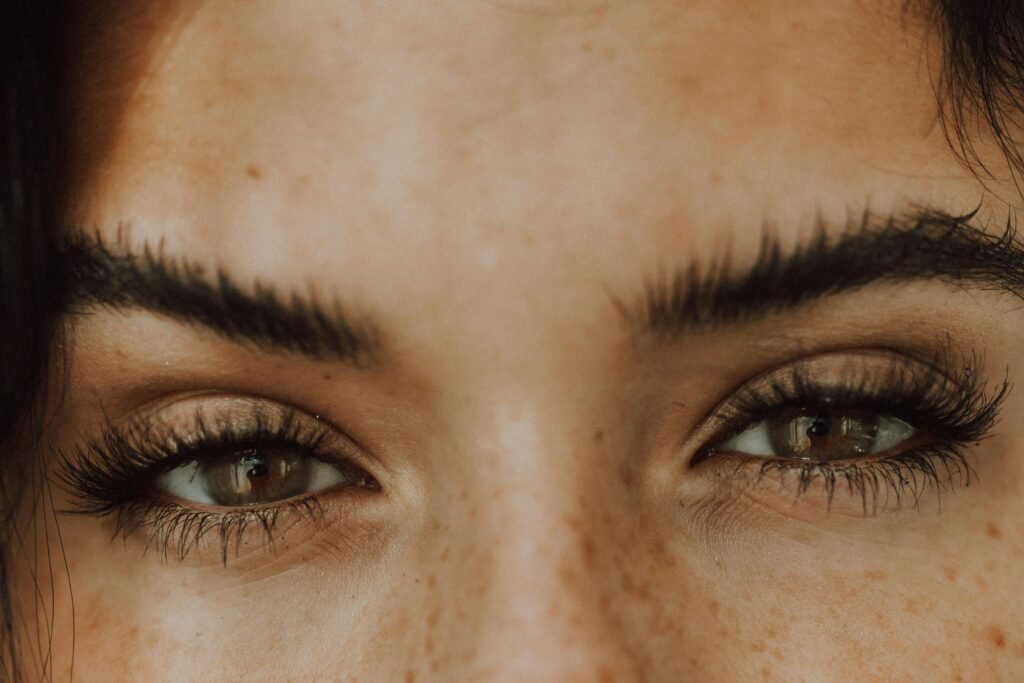
Cleanser → Toner → Serum → Moisturizer → Sunscreen (AM)
Cleanser → Toner → Treatment → Moisturizer → Face Oil (PM)
Common Skincare Layering Mistakes to Avoid
- ❌ Mixing Vitamin C with Retinol
- ❌ Applying oils before water-based serums
- ❌ Using too many actives at once
- ❌ Skipping sunscreen after actives
- ❌ Not waiting 30–60 seconds between layers
Pro Tips for Layering Skincare Like a Pro
- Wait 30 seconds to 1 minute between layers.
- Layer water-based → gel → lotion → cream → oil.
- Let your skin “feel” when enough is enough—don’t over-layer.
- Use retinol only at night, and introduce slowly (1–2x per week).
- Always finish with sunscreen in the morning.
Best Ingredient Pairings (What Works Together)
| Combo | Benefit |
|---|---|
| Niacinamide + Hyaluronic Acid | Brightening + hydration |
| Retinol + Peptides | Anti-aging + collagen boost |
| Vitamin C + Ferulic Acid | Antioxidant power |
| BHA + Zinc | Oil control + acne-fighting |
Frequently Asked Questions (FAQs)
Can I layer retinol with vitamin C?
No, use Vitamin C in the morning and retinol at night to avoid irritation.
How long should I wait between steps?
Wait 30–60 seconds between layers to let products absorb properly.
Should I use face oil before or after moisturizer?
After moisturizer—oils are occlusive and should seal everything in.
Do I need both serum and moisturizer?
Yes. Serums deliver actives; moisturizers lock in hydration and protect the skin barrier.
Final Thoughts: Mastering How to Layer Skincare in 2025
Skincare is only as good as how you use it. Knowing how to layer skincare products properly in 2025 can mean the difference between wasted product and radiant skin.
✔️ Apply from thinnest to thickest
✔️ Use actives at night and SPF in the morning
✔️ Match layering order to your skin’s needs
Whether you’re a skincare beginner or seasoned pro, this guide helps you make your products work harder—without adding stress to your routine.

